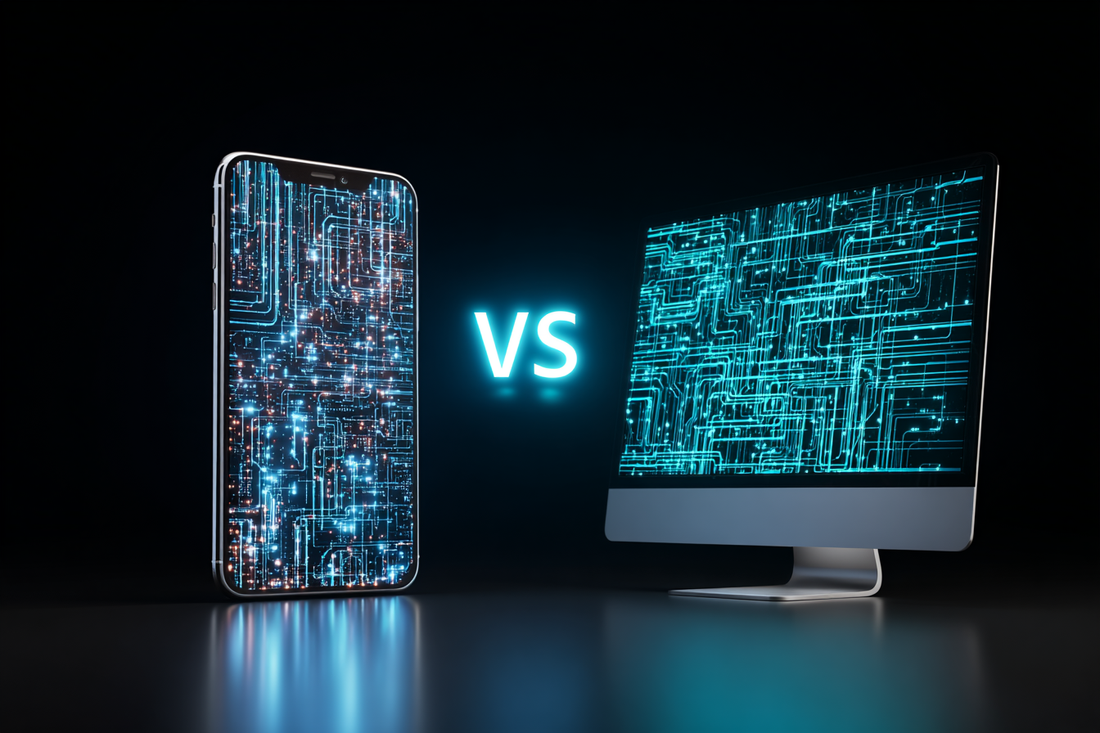
How to Face Swap on Mobile vs. Desktop: Pros & Cons – A comparison of mobile vs. desktop face swap applications
Share
Our phones have become infinitely close to being handheld mini-computers, cameras, and so much more. Face Swap sites and apps, on the other hand, can be found mostly in browsers, which are available to both PC setups and handhelds. Despite the similarities between the two, the difference in screens and computing power changed a lot between the two mediums, which eventually led the two to become distinctive platforms for Face Swap. Neither is necessarily better or worse than the other, but they both cater to different user bases that might have a need for something that can't be found on one or the other platform. But things don't have to be so complicated as most Face Swap sites will hardly be able to demand anything substantial enough that you need to choose between your phone or PC. But if you still have doubts, we got your back.
Finicky Small Screens
The most noticeable difference between a PC and a phone is that a smaller screen means there is going to be increased difficulty when browsing a website. Historically, there have been thousands of websites that remain unoptimized for phones even today, so you end up with PC mode pages on the small screens or sites that don't respond well to touch screens. However, as long as the phone can operate a website, most users who stick to their handhelds will find no issues. What might prove a slight challenge is that Face Swap sites require the user to upload photos, which immediately means you now have to fight the phone's memory file, which never seems to do what you want it to. What's worse, the site might reset by the time you find what you are looking for, and you will have to start over.
Simple Face Swap Site
Despite the screen dispute, the middle ground between PC and phone is very simple. The most classic Face Swap sites don't require anything of note other than receiving the images you want to process. There is often zero input from the user, and the AI handles everything else. In cases like this, there is no point in rating which platform is better as both can do at least that much, and the website offering the Face Swap is not worth the effort. The difference between a PC and a phone is only seen when using apps, software, and websites that allow the user to do much more than sit in their chair. Phone apps have the edge here as most of them let the users fiddle with the settings and features. The PC side has rarer examples of this and mostly relies on big editing software or features that can prove worthy.
PC Status
Personal computers have come a long way, and most today are powerful machines that can even run Crysis on medium settings. The PC is the go-to platform for anyone who needs a display system that will obediently and easily respond to your inputs. Things like mouse and keyboard, for example. The PC hardware is also capable of processing requests and instructions without a hiccup. Overall, the PC is more suited for professional use of Face Swap tools where human attention is needed. PCs are a working platform and are best used for handling large data files. Large tech companies frequently create complex software for PC users that are capable of interacting with each other.
Pros:
- Big screens for easy viewing
- Highly responsive systems for precise input
- Able to run heavy software
- Can operate multiple tabs at once
- Streamlined file uploading
- Large memory space
Cons:
- Cumbersome to carry
- Phone apps require an emulator
- Higher-end PCs require a large investment
- Many software require a subscription
- Large power consumption
- Camera quality varies heavily
You will get the best use out of a PC only if you plan to use multiple editing software and if you need to work precisely with your medium. The true benefit is best seen in office or professional settings, with all others lacking.
Phone Status
Phones are a lightweight option that has become a trustworthy companion for anyone living in a country with even a semi-decent technology level. The app store is a breading ground of all types of free software that are welcoming to beginners, including Face Swap apps. Phones, unless paired with a stylus, don't offer a precise input of commands, so fine work like drawing or crop selection can be difficult. The lack of a keyboard also means that commands cannot be input directly. Despite all of this, phones are the best platform for casual usage of Face Swap AI, with built-in cameras that can immediately take a new picture. Modern phones can even handle some semi-heavy software.
Pros:
- Affordable for most users
- Able to access the rich app store
- Easy to carry around
- Built-in camera
- Small power consumption
- Directly connected to social media
Cons:
- Small viewing screen
- Subpar hardware
- Inprecise input registration
- Limited open tabs
- Small memory space
- Unable to run heavy software
Phones provide the best mileage for anyone not planning to work on large editing projects. They are suited for social media and can even handle browser-based Face Swap models.
It's Your Choice
The natural trajectory of Face Swap AI models is to do away with any user input as it's assumed the user will lack any editing skills. This means that all models eventually meet at one point where there is also no reason to justify sitting behind a PC and working with Face Swap tools. If you are a casual user of Face Swap, you will have the most options on your phone through the hundreds of apps and features integrated into phone-based social media apps. But if you have found Face Swap software that supports professional editing, or if you have a photo that requires more love from you, then feel free to sit in your chair and work with the many powerful professional software that all interlock on your PC. You will not make a mistake!


